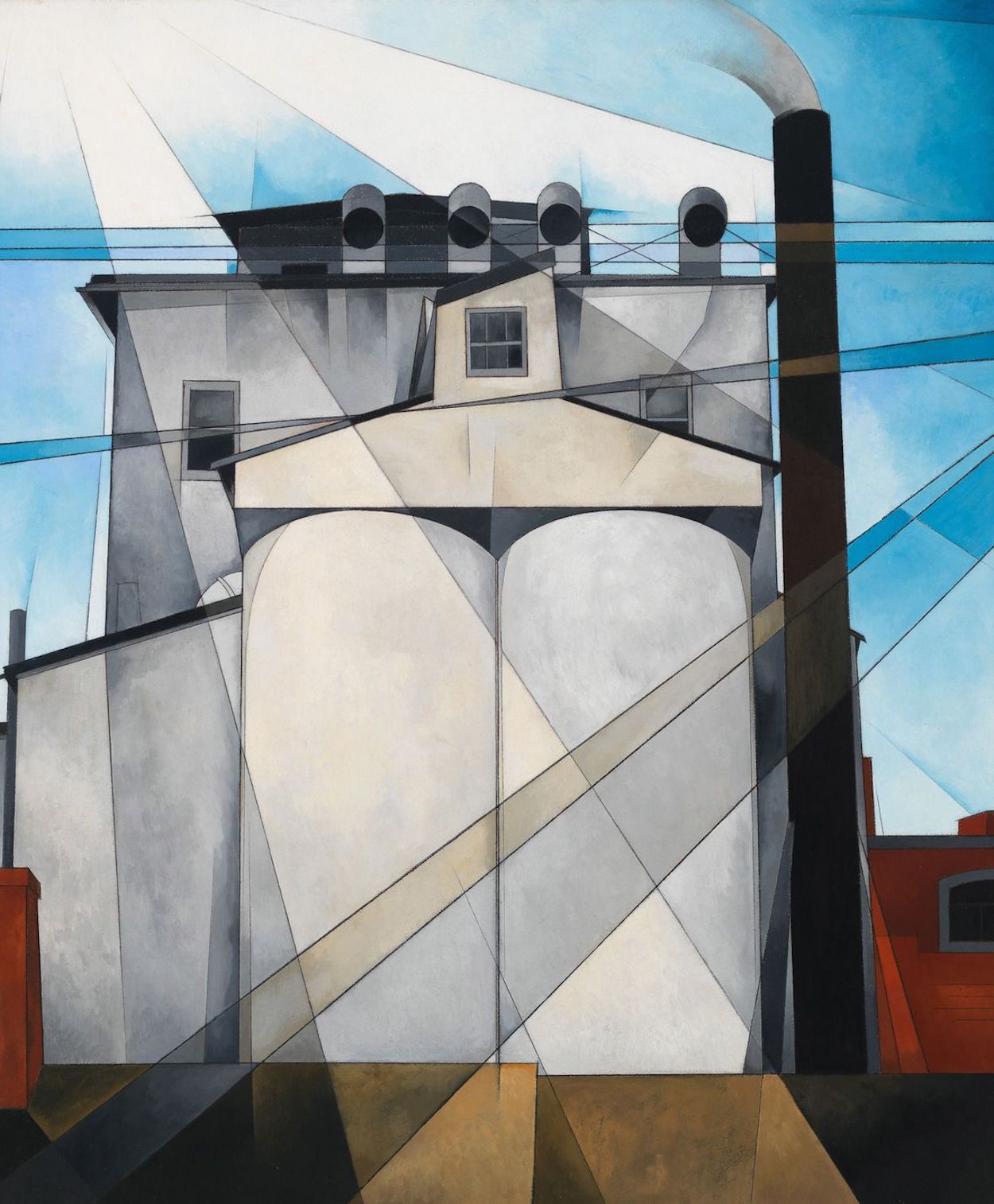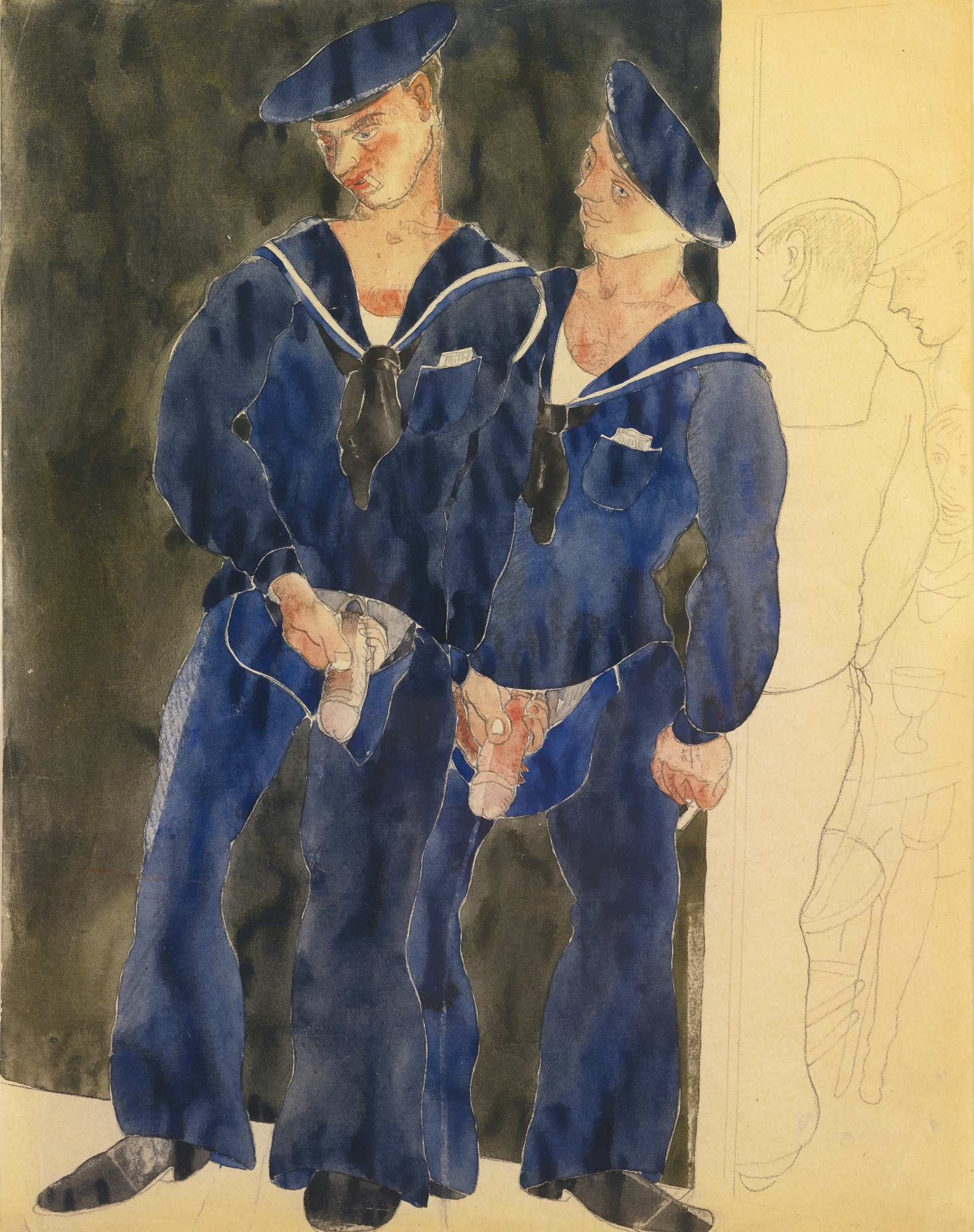A grain elevator made of concrete and steel looms over surrounding buildings in the rural outskirts of Philadelphia, a stark testament to industrialization. Sharp lines representing shafts of light fragment the painting. My Egypt by American artist Charles Demuth is a prime example of Precisionism, a uniquely American modern art movement of the 1920s which incorporated elements of Cubism (geometrical shapes and fractured planes) and Futurism (emphasis on modern technology). Artists like Demuth, Charles Sheeler, Joseph Stella, and Georgia O’Keeffe, among others, neither praised nor vilified industrialization in their art, but rather, simply presented images of modern architecture such as smokestacks, bridges, and skyscrapers, with clean, exacting lines from which the term Precisionism was born. Their artwork may be interpreted as a celebration of engineering advancements, yet, notably, figures rarely appear in these paintings, a possible reference to alienation, a by-product of large-scale manufacturing and automation.
Charles Demuth found ample subject matter in the farming community of Lancaster County, PA, where, plagued by ill health, he spent most of his life. From 1927 to 1933, he made a series of seven paintings featuring local factories. Although his flat, simplified images highlight geometric features of the structures, the paintings are not abstract. Rather, the influence of photography is apparent through unconventional viewpoints and cropping as well as extremely smooth painted surfaces with no apparent brushstrokes.
What is not clear is the connection between this image and its title. Does the towering structure, which in reality could be in excess of 100 feet tall, represent an architectural marvel similar to the Great Pyramids? (Tutankhamen's tomb was discovered in 1922 prompting a global fascination with ancient Egypt). Or, does the title liken the dehumanization of the slaves who built the pyramids to that of the American workforce in the first quarter of the twentieth century as a result of industrialization? You decide.
Martina Keogan
Here you will find outstanding examples of Precisionism painted by Georgia O’Keeffe.


 Charles Demuth
Charles Demuth